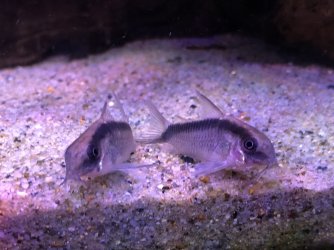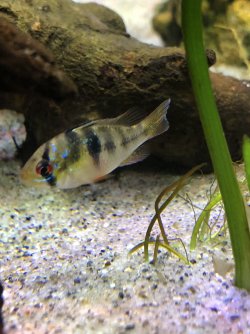I mentioned the "cory poisoning" for information, not suggesting this is or is not what happened here. It is one possibility, though to be honest not one I would immediately assume because the corys are usually dead in the bag before they get home. I've no idea how a cory may release this toxin, by which I mean minimally as opposed to the instant death. You say all the cory deaths in recent weeks...have there been others aside from these new cories?
The fact that the other existing fish (non-cory) are all fine tells us this was less likely to be a water issue in the tank, though it is always possible that existing fish have become somewhat adapted ad new fish cannot manage. Cories are especially sensitive to any water differences. But I don't think that was the case here from what you've told us.
We still need the questions about the store water/tank answered. A very significant difference in the water is not going to be managed by the fish whatever the acclimation, unless it occurs literally over weeks, and that none of us do. But I would want to know the store water parameters, substances they add, and if their fish are showing any signs of this. You mention the pH in the bag water being 7.0, and your tank is 6.2 to 6.4 pH. My first thought is, how do they keep it at 7? They may be adding some substance; they may increase the GH/KH too. Just to rule out you need to know this. The change from 7.0 down to 6.2 is not insignificant, but it is also not sufficient to kill the fish on its own.
Ammonia is another possible; the bag water can be high in ammonia, and cories do not tolerate any ammonia well; this will weaken them, which should be temporary, but if there are other issues this could be the proverbial straw that breaks the camel's back. This is one reason I acclimate more substantially rather than the drip method. When I get home, I our out what water I can, then float the bag to even the temp, then add a cup of tank water to the bag. My goal here is getting them in the tank water faster rather than delaying. Some very knowledgeable aquarists do not even go this far; once temp is the same, they net out the fish. I doubt it makes much difference mixing or not mixing.
I'll respond to your other questions now.
Byron, do you move decor at all to clean? I have also been "raking" the sand gently with my fingers to ensure that there aren't any of those bacteria pockets in the sand forming. I have read that those pockets can form and, if they burst, they can be extremely toxic.
Right now, my water change strategy, is first I "rake" the sand gently with my fingers, The next thing is to take half of the decor out, clean the sand, then put the decor back. Then I do the other side. Making sure to gently glide along the sand with the water changer siphon nozzle, grabbing as little sand as possible. Then I do the other side of the tank.
I never touch the decor once the tank is set up, though I may do a bit of rearranging of wood or plants once in a while. But in answer to your intended question, no, I leave it alone. And I never "rake" the sand. I used to do something like this along the front during the water change, but now in most of my tanks I don't touch the substrate much at all. I do not overfeed (this makes a big difference), and Ihave live plants. I also have Malaysian Livebearing Snails, hundreds of them; both these and the plant roots deal with the substrate. You also should have some anaerobic zones for a healthy substrate which is the basis of a healthy aquarium.
When I have torn down tanks that have been running for four to six years, it can be pretty foul under the wood and rock. But in 25 years I have never had fish issues from so-called dead spots. I don't have very deep substrates either, 3 inches in the largest tank to 1-2 inches in the others.
Having said that, if you are regular there is probably no problem in raking the open substrate, but I would never go under decor unless I decide to move it, then I lift it gently straight up with the water changer beside the spot and do a good clean.
I do have a question now also. Changing 50% of the water, OK.... when I'm replacing the water, can I wait to condition the water until the 25 gallons of new water's in the tank? I have been titrating the correct amount of AmQuel Plus over the course of the 15 or so gallons I change. I have been wondering, can it just all go in at the end, will the fish be ok?
No. You need to add the conditioner near the beginning of the refill. Once or twice I have forgotten, and as the tank was filling, I spotted the fish moving to the opposite end, ear the surface. I knew what it was, the chlorine. If you add new water via buckets, add the conditioner to each bucket, sufficient only for the volume in the bucket. I do this for my two smallest tanks as using the Python connected to the tap inevitably overflows them; the buckets hold 2.5 gallons so I add three drops (1 drop per gallon of the API Tap Water Conditioner).
With the other tanks, I get the temp set at the faucet, turn the valve to begin refilling, then go in and add the conditioner. I use a dropper, and I only add sufficient for the volume of fresh water. I change 60%, sometimes more, of the tank. I have a good idea as to the volume, I've done it for so long. In the 70g and 90g for example, the water level drops down 10 inches from the top, that is 37 gallons, so I add conditioner for no more than 40 gallons. After years of doing this, and siphoning out with buckets to confirm the volume, it is second nature by sight.



